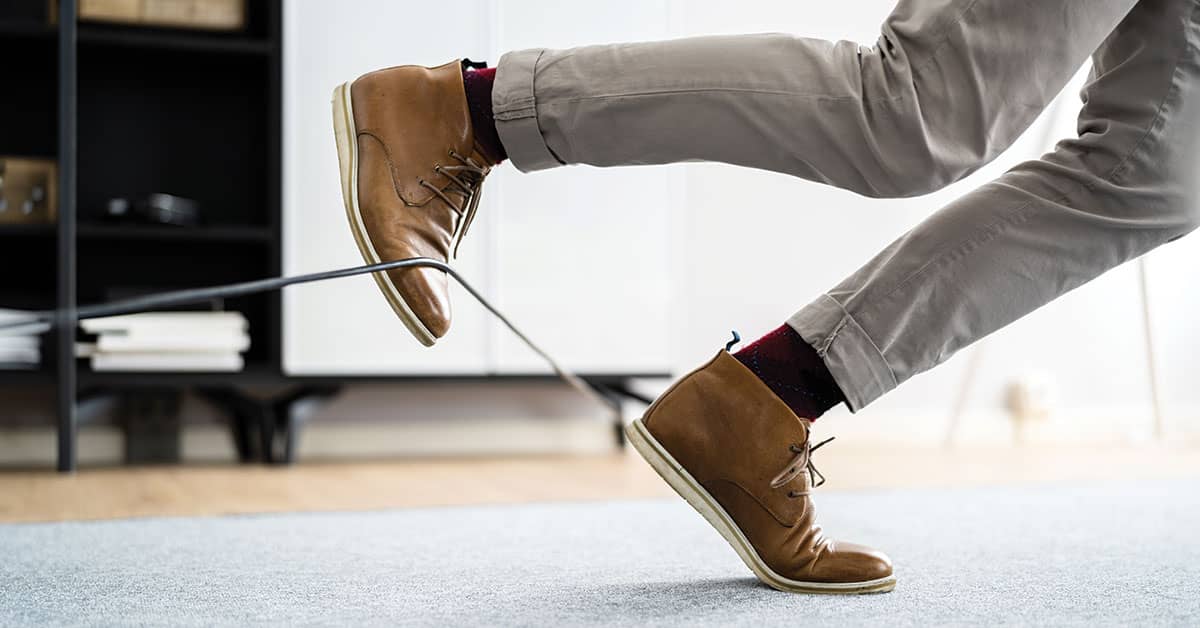Offices aren’t immune to occupational hazards
Date Posted: 05/06/2024

No workplace is ever completely free of hazards and an office is no exception. The hazards may not be as obvious as they are on a shop floor or on a construction site, but people can suffer serious injuries in an office environment. Consider:
- There can be fire hazards;
- Employees may need first aid or medical attention;
- Improper housekeeping can lead to slip, trip, and fall hazards;
- Materials need to be manually lifted; and
- Electrical appliances may become damaged.
Maintaining a safe, comfortable office environment also requires attention to industrial hygiene factors such as temperature, noise, and ventilation; ergonomic factors such as workstation design and repetitive motions; and physical hazards such as chemical exposure.
Reporting injuries and illnesses
Office workers may not have the same risk for serious injuries as do factory workers, but injuries can still occur. Employees should report any injury right away and understand that no injury – or illness – is too minor to report.
When there’s no nearby hospital, clinic, or infirmary that can be used to treat injured employees, the employer must train persons to render first aid. In many offices, however, the policy is to send employees to a nearby clinic in case of an emergency or to call for emergency responders such as paramedics.
Slips, trips, and falls
Slips, trips, and falls are some of the most common causes for serious injuries in the office. Good housekeeping can help prevent incidents:
- Keep floors dry. Wipe up spills right away and mop up tracked-in rain or slush at doorways.
- Keep areas well lit. Report burned out lights.
- Keep aisles, stairs, and work areas clean and free of clutter. Store materials properly.
- Don’t let electrical cords be tripping hazards. Tape them down securely if they must temporarily be run where people walk.
- Report and repair loose or damaged stair treads, handrails, or carpeting promptly.
- Always use a proper stepladder to reach materials on high shelves. Check the condition of the ladder before use.
Practice safe lifting techniques
Office workers aren’t immune from having to do manual lifting occasionally. Improper lifting is a common cause of injury. Employees should try to use a cart or dolly to move items when they can and get help to move heavy materials. When manually lifting materials, employees should follow safe lifting techniques: Lift with the legs, not the back.
Electrical equipment hazards
In an office, properly installed electrical equipment is guarded, or covered and insulated. However, misuse and defective equipment can cause shocks and burns. To avoid electrical hazards:
- Don’t daisy chain power strips or extension cords.
- Visually inspect portable electrical equipment before use. Look for defects such as loose parts, damaged or missing prongs on the plug, damaged insulation around the cord, and exposed bare wires. Remove damaged equipment from service.
- Don’t handle cords, plugs, or equipment with wet hands.
- Keep cords clean and free from kinks.
- Don’t raise or lower equipment by its cord.
Office hazards can only be addressed if they’re identified. If employees notice a hazardous situation, they should report it right away. Employers should fix issues quickly to reduce the chance of an incident.
How Safety Management Suite Can Help
Under the OSHA Recordkeeping regulation (29 CFR 1904), covered employers are required to prepare and maintain records of serious occupational injuries and illnesses, using the OSHA 300 Log. This task is easy using the Incident Tracker tool in the J. J. Keller® SAFETY MANAGEMENT SUITE. Let this tool help you track recordable incidents to help identify hazards and trends.
E-mail Newsletter
Sign up to receive the weekly EHS Insider email newsletter for safety articles, news headlines, regulatory alerts, industry events, webcasts, and more.